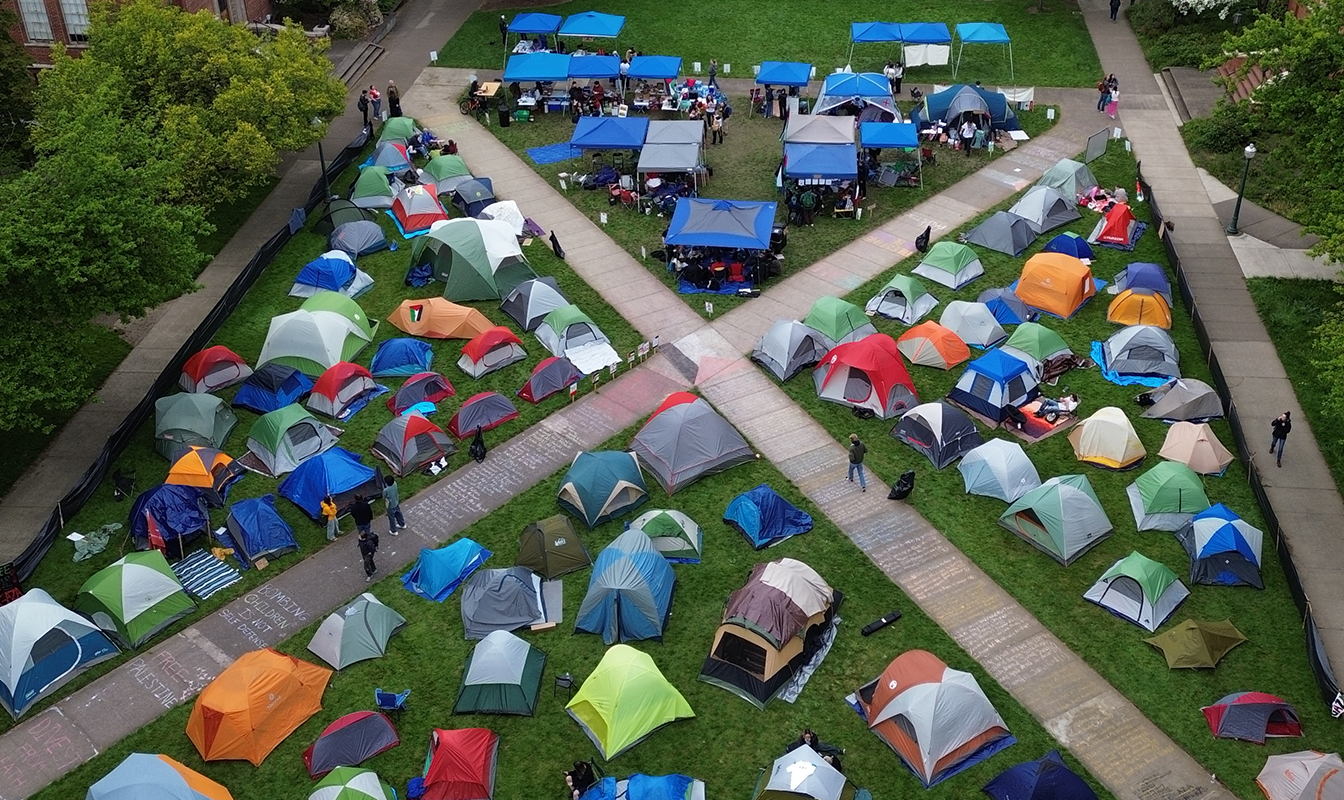From Columbia to UCLA and across the nation, tranquility has mostly returned to campuses that recently were roiled by demonstrations and conflict. Campus leaders should take advantage of this welcome summer respite to reflect, review, regroup, and plan.
With the Israel-Gaza war continuing and the U.S. election year gearing up, there’s every reason to expect that the fall semester will bring renewed, and perhaps intensified, protests and heated discourse.
Based on our own experience in advising several major universities, as well as a review of the actions some of their peers are taking to prepare for the next academic year, we’ve prepared a checklist for university leaders to use before students and faculty return.
Policies
The past academic year posed some challenges that universities had not fully anticipated, such as the tension between free speech policies and their obligations under Title VI of the Civil Rights Act to provide an environment free from discrimination and harassment. And the sudden proliferation of encampments sometimes found university policies less clear than they might have been on whether overnight camping, or structures to accommodate it, is prohibited. Here are a few questions universities should consider in reviewing and updating their free speech and other policies:
Do they need greater clarity for specific locations?
You may need to clarify permissible time/place/manner restrictions on demonstrations to provide for specific rules for specific parts of campus, or to rule some locations – such as hospitals, classrooms, and individual offices – off limits altogether. Rules governing advance-notice requirements and reservation of certain areas by student groups may need to be clarified.
Are specific rules needed on encampments, structures?
Many institutions drew a distinction between the exercise of free speech and the occupation of certain areas of a campus in a way that excludes others, especially if that occupation became an overnight encampment. Are existing rules adequate to support that distinction?
Poster policies:
Both the placement of posters, and the tearing down of them by students and faculty members, became an issue in recent months, including in the bulletin boards of academic departments and in dormitories. Policies regarding their duration, location, and prohibitions against their destruction may need to be addressed.
Light projection:
The projection of messages onto buildings through the use of light projectors became an issue at George Washington University and elsewhere. Some policies, including Penn’s, prohibit such projection without the university’s consent, though it is unclear whether such a prohibition at a public institution would survive First Amendment scrutiny.
Codes of Conduct:
Whether calling for “genocide” violated university codes of conduct became a flash point at congressional hearings, and a number of institutions prohibit calling for violence. But is there clarity about how prohibitions against calls for violence will be applied? Do they extend to calls for “intifada?” For demonstrations in support of Ukraine in its armed conflict with Russia? The Arizona Board of Regents is considering a proposal to ban any student group that “knowingly provides support to a designated foreign terrorist organization,” which critics say could violate free speech rights. These issues are likely to continue to be a source of conflict, and possibly lawsuits, especially at public institutions where the First Amendment applies.
Doxing and Online Harassment:
Doxing and other forms of digital harassment have become widespread. We are seeing anti-doxing policies appearing and expect they will become commonplace.
Practices and Procedures
In addition to updated policies, universities will want to review the way in which they implement these policies and, more broadly, the way they preserve peace and safety on campus. Such a review should include:
Post-mortem reviews:
Looking back at the just-concluded academic year while memories remain fresh, universities should ask themselves what they did well, and what might have been done better, and then establish an agenda for making the necessary improvements.
Health Check on Relationships:
How strong are relationships with student groups? Faculty? Community groups? Law enforcement? The events of the past year have strained many of those relationships, and many of them probably need attention and proactive outreach.
Enforcement and appeal procedures:
Were the university’s disciplinary procedures up to the challenge posed by large numbers of student disciplinary cases? Were they expeditious? Did they produce a fair result? Will they withstand legal scrutiny?
Campus Coordination:
How well do the university’s component parts work together, especially in the crisis environment of a controversial demonstration? How can coordination and decision-making be improved?
After revising their policies, practices, and procedures to reflect the challenging new realities of campus life, universities should consider running their leadership through a simulated crisis in which a demonstration leads to arrests, violence, and internal strife. While it may seem that in recent months reality has provided enough lessons, there is no substitute for a carefully constructed simulation to provide an opportunity for building muscle memory and identifying weaknesses.
It’s a to-do list that may consume the remainder of the summer, but will pay off in the fall.
This article was developed by Legend Labs founding partner Jeff Hunt in collaboration with senior counselor Bill Feldman.

